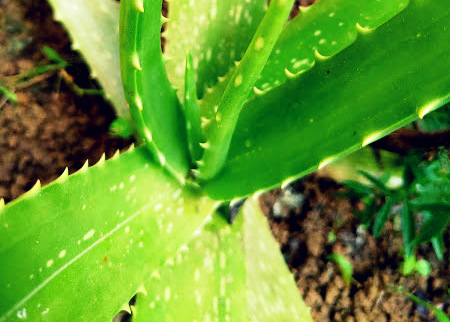Aloe vera and Aloe barbadensis
Botanical name: Aloe vera and Aloe barbadensis
Family : Liliaceae
Origin : Eastern and Southern Africa
Plant part : Leaves, seeds, roots
Importance:
Two major products from leaves
1. Yellow bitter juice specialized cells , beneath epidermis yields drug aloe.
2. Parrenchyma tissue of centre of leaf contain mucilaging gel yield aloe gel obtained from A.barbdensis.
Aloe also having anthro glycosides – Barbaloin – 4.5 to 25% and aloin. Aloe gel contains gluco mannan which may be a polysaccharide almost like guar utilized in preparations of burn, care medicines also utilized in laxative preparations
Botany:
Perennial herb, shallow rooted and doesn't have true stem with multiple tuberous roots. It does not produce many viable Seeds as it is a male sterile plant
Varieties: burn plant var chinensis is usually cultivated one
Soil:
Hardy and grown on variety of soils, does well in sandy coastal and loamy soils with pH upto 8.5. Water logged and problem soils not suitable
Climate:
Wide adaptability hence cultivation possible throughout country and prefers warm humid dry climate with 150-200 cm to 35-40 cm yearly rainfall
Propagation: Root suckers or rhizome cuttings
Planting: 15-18 cm long root suckers, rhizome cuttings are planted with a spacing of 60 x 30 cm or 60 x 45 cm and buried 2/3 portion under the bottom .
Manuring: 150 kg/ha mixture of NPK
Irrigation: Immediately after planting needs one irrigation and totally 4 to 5 irrigations / year required.
Harvesting:
Plants removed by manually or with tractor after eight months after planting Commercial yield from second year to upto five years
Yield : Fresh weight 10000 – 12000 kg/ha


